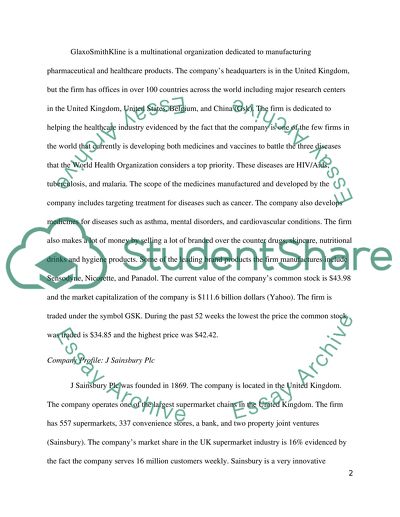Cite this document
(“GlaxoSmithKline Plc and J Sainbury Plc: Accounting for Limited Coursework”, n.d.)
Retrieved from https://studentshare.org/finance-accounting/1428813-accounting-for-limited-companies
Retrieved from https://studentshare.org/finance-accounting/1428813-accounting-for-limited-companies
(GlaxoSmithKline Plc and J Sainbury Plc: Accounting for Limited Coursework)
https://studentshare.org/finance-accounting/1428813-accounting-for-limited-companies.
https://studentshare.org/finance-accounting/1428813-accounting-for-limited-companies.
“GlaxoSmithKline Plc and J Sainbury Plc: Accounting for Limited Coursework”, n.d. https://studentshare.org/finance-accounting/1428813-accounting-for-limited-companies.


